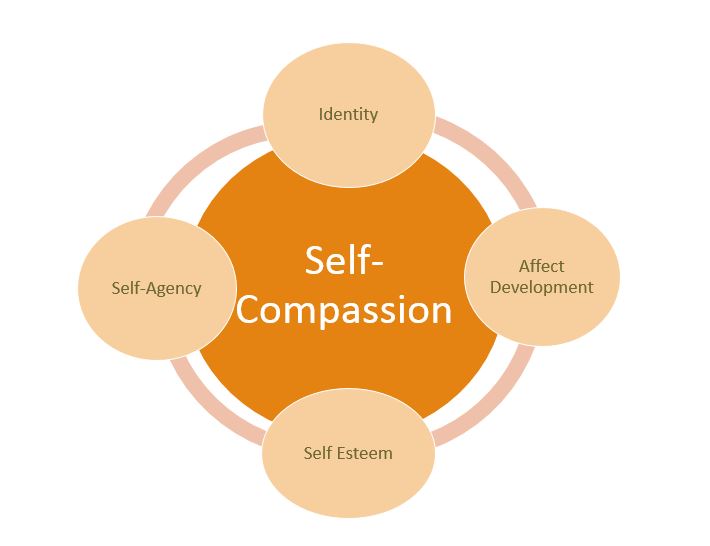
01 Mar Building Inner Structure to Walk Out of Suffering
When we suffer in any of the myriad forms that suffering takes we lose connection to the best parts of us. We find it difficult to access what inner nourishment, the kind that replenishes us. We point to the traumas of our lives and say, that's it! If it weren't for that I wouldn't be suffering like I am.
Yet, the reason trauma doesn't get repaired is often because there's a structural issue that gets in the way, somewhere a line of development didn't get laid down when we needed it to. We're left with a hole inside.
We need to repair the inner connective tissue that allows us to move fluidly, opening our hearts to receive and give and get replenished.
This feels so important yet not well used or understood that I wanted to take what I've learned from Daniel Brown, PhD and outline what creates that inner structure. If there's enough interest I'll follow up with more in future ezines.
I recently did a podcast for someone (which will air in April) who is putting together a series on depression. In the back of my mind I found myself drawn to the writings of Antoine de Saint-Exupery who wrote, among other books, The Little Prince.
What makes the desert beautiful
is that somewhere it hides a well
When we are depressed we feel dry, malnourished, depleted, empty, lost, forgotten. We can't find out way. We forget what Saint-Exupery wrote – what makes the desert beautiful is that somewhere it hides a well.
We forget that we have a well, inside us, a reservoir so deep and full that it never dries or empties out. We forget our way, we lose the map or the directions aren't clear.
Besides the important chemical, physiological, biological components that produce our depression or anxiety, from an attachment perspective our hearts get broken, repeatedly, frequently, chronically and pervasively when our simple needs for love, kindness, listening, being seen, valued, cared about are not met.
There are four areas of psychological development that when repaired build internal structure, creating internal scaffolding which can help people (along with other important components) climb out of the psychological parts of depression.
Self-compassion practices are what circle us and provide us with the cocoon of warmth and care to deal with the difficulties that arise on the journey.
For this I can gratefully thank my mentor, Chris Germer, PhD, who is spearheading the important teaching of self-compassion around the world.
With the practice of self-compassion we continually go to the well and water our arid inner ground. We create an environment where we are willing to compassionately tend to our broken places instead of leaving them alone, lost, cast aside.
Healing comes from actively engaging, in therapy or in your own imagination, these dry, broken places. We do that by softly encountering those parts that can't believe this could be possible, gently encouraging yourself to turn over and over again to what nourishes you despite completely doubting its possible.
It's not arbitrary. There are specific lines of development that we need repair:
1. Sense of Identity which allows us to know our unique and special place first with another and then in the world at large. Antoine de Saint-Exupery wrote about this in The Little Prince saying, “You are unique in all the world.” When we know that we are special to another we incorporate a felt experience of being connected and cared about
2. Self – Agency is knowing that our needs matter to someone and that other people are willing to be responsive and meet our needs
3. Affect development allows us to be with the vortex of feelings and sensations that are too much for us to hold, especially when we are wee bitty things. This often happens pre-consciousness, before we have the cognitive capacity to sort out the vortex of internal cacophony. An adaptive strategy can be to dampen the noise and sometimes we do that with depression
4. Self esteem comes when we're able to tolerate positive feelings reflected in the eyes and presence of others, knowing we have value in our own eyes and in the eyes of others.
Healing comes from slowly, gently, consistently practicing the simple moment to moment skills that open our pain without crushing us allowing us to heal our hearts
Unfortunately, it takes practice. Daily, moment to moment, weekly. It takes all of us step by step to change these entrenched non-verbal patterns.
Perhaps you'll gain sustenance from Antoine de Saint-Exupery:
No single event can awaken within us a stranger totally unknown to us.
I'll be posting an audio going into greater detail of this in the next weeks.
May all our hearts be easy. Held in the gentle knowing that we're not alone. Know that around you even though unknown to you are people who are walking the same path, looking for the same connections and healing. I pray that you will come to know that you are loved and cared about.
As always, I'm glad to be there to support you in nurturing your heart and your life,

